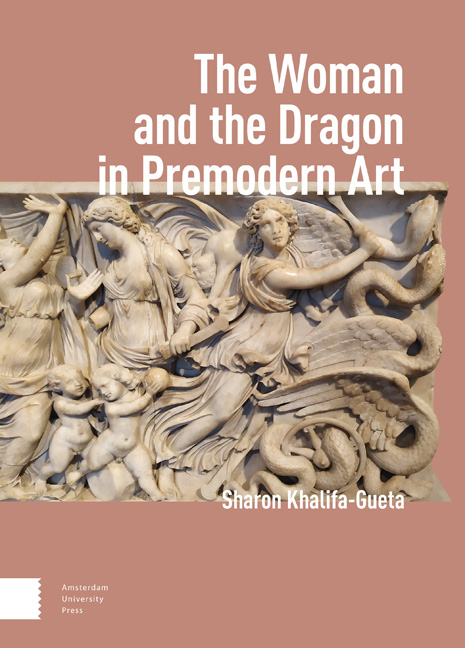Book contents
- Frontmatter
- Contents
- Acknowledgments
- Introduction
- 1 The Dragon
- 2 The Cave and the Womb: The Myth of Cadmus and the Myth of Apollo and Python
- 3 Eligible Wives and Monstrous Women: Andromeda and Medusa
- 4 Medea – The Holy Woman and the Witch
- 5 Eve and Lilith — Christianizing the Great Goddess and the Dragon
- 6 Saint Margaret – Taming the Dragon
- Conclusion
- Bibliography
- Index
1 - The Dragon
Published online by Cambridge University Press: 17 February 2024
- Frontmatter
- Contents
- Acknowledgments
- Introduction
- 1 The Dragon
- 2 The Cave and the Womb: The Myth of Cadmus and the Myth of Apollo and Python
- 3 Eligible Wives and Monstrous Women: Andromeda and Medusa
- 4 Medea – The Holy Woman and the Witch
- 5 Eve and Lilith — Christianizing the Great Goddess and the Dragon
- 6 Saint Margaret – Taming the Dragon
- Conclusion
- Bibliography
- Index
Summary
Abstract: Attending to the motif of the woman and the dragon requires an initial understanding of how dragons were conceptualized in the human imagination, as well as of the male dragon-slayer topos. This chapter explores the biological and psychological reasons underlying the creation of dragon imagery, and its origin in the human experience of snakes. Although I focus on Mediterranean images of dragons as they evolved over time, the theories I examine have global pertinence. This chapter provides a summary of the scholarship on dragons and dragon-slayers, which serves as the foundation for the subsequent examination of the split between the representation of men and women in relationship to dragons.
Key Words: Dragon, snake, life metaphor, Mediterranean, art, dragon-slayer.
This book's exploration of the relationship between women and dragons centers on visual representations created throughout Western Europe and the Mediterranean and on their transformation over the course of close to two millennia, from Greco- Roman antiquity to the medieval and early modern period. The current chapter opens with a preliminary examination of dragon imagery – its origins, evolution, attached symbolic meanings and functions – while offering a summary of existing studies on this subject. I then go on to examine visual depictions of dragons as related to myths, legends, hagiographies and stories presenting an interaction between a male protagonist and a dragon, with special attention given to the topos of the male dragon-slayer.
This chapter provides a number of unique insights that mostly rely on artistic evidence, while focusing on a summary of numerous scholarly sources in order to offer a “distant reading” of Mediterranean dragon studies: it does not offer an in-depth analysis of texts or images, but rather provides an overview of the existing literature on dragons, while identifying key themes pertaining to the current book, which surface through a combined study of textual and visual sources. The detailed analysis of the dragon-slayer topos will serve as a comparative basis for my examination, in the following chapters, of the motif of the woman and the dragon, as encompassing a distinct genealogy of visual images and signs, which give rise to rich and wide-ranging constellations of meaning.
- Type
- Chapter
- Information
- The Woman and the Dragon in Premodern Art , pp. 23 - 46Publisher: Amsterdam University PressPrint publication year: 2023

